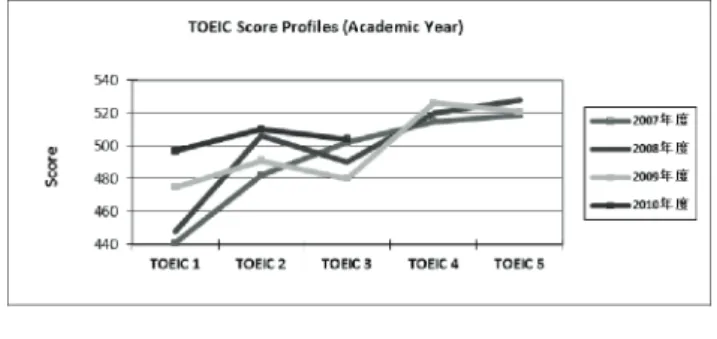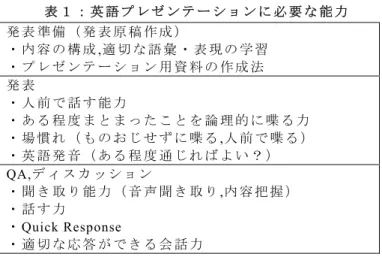日本の英語教育における「文系バイアス」をなくす 理工系(エリート)学生の育成のための英語教育へ。
1 「一般教養」として英語を教えるのは効果的ではない。
2 理工系エリート育成のための英語教育。
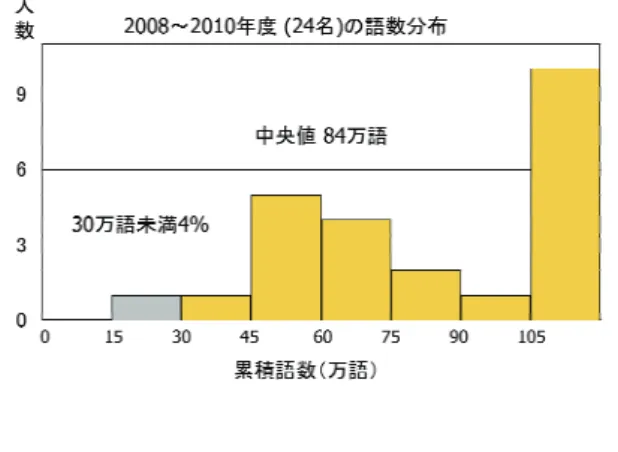
Introduction
Course design
ALESS is a one-semester course taken by all first-year science and engineering students at the University of Tokyo. Students research their own topic and conduct a simple science experiment, then use the data and experience from their research to write a formal science research paper and finally present their findings. The course objectives are documented elsewhere [1] but I will summarize them here as follows: at the end of the course students should be able to recognize the difference between genres and registers and produce appropriate language for the context (either a written science paper or research presentation ); students should be able to review and critically evaluate both each other's and their own writing in terms of content, rhetorical organization, use of vocabulary, grammar and mechanics; they must be able to research a question, use
As these objectives reveal, the ALESS course is primarily an EAP course, but with an emphasis on science and engineering topics (such as how blade angle affects the efficiency of windmills, how wave motion works, turning insects, and so on) and genres (research assignments and research presentations). The most important thing is that students develop skills that they can take with them into their future. Throughout the course, these skills are nurtured in what would best be described as a task-based language education framework.
One of the greatest difficulties, but also the most compelling duties of language teachers, is to create such situations. The innovation of ALESS is to enable students to research their own scientific topic, either individually or in a small group, and to talk and write about their project through the successive stages of conceptualization. At each stage, students write and discuss their work, providing a personal and authentic communication topic.
However, getting students to conduct their own experiment within a language course design is not without its challenges, and I return to this at the end of this report.
Input
It is about providing structured tasks and authentic communicative situations where students really need and want to communicate in the target language.
Program development
Future challenges
I believe science and engineering majors are just as capable and willing to learn languages if they have the motivation to do so.
Conclusion
日本の理工系学生のための英語教育の新たな取り組み 公開研究発表会講演録『理工系英語教育を考える』早稲田大学情報教育研究所英語教育学会編集委員会編2012 年 3 月 26 日。プログラムの教育概念、背景、実施方法の概要が説明されています。まず、日本の科学技術関係者が直面している課題。評価とプログラム評価がどのように機能するかを説明します。最後に、このプログラムの将来の開発計画について説明し、他のアジアの機関でこのプログラムを実施するための重要な前提条件を提案します。
Waseda University, Faculty of Science and Engineering, Center for English Language Education 3-4-1 Okubo, Shinjuku-ku, Tokyo 169-8555, Japan. This paper describes the rationale, background, and current implementation of the Waseda University Faculty of Science and Engineering English program that has been continuously developed at the Center for English Language Education (CELESE) since 2004. First, I will explain the linguistic challenges that Japanese faces to scientists and engineers that led to the creation of the program.
Finally, I will report on future developments of the program and suggest key requirements for a successful implementation of the program at other institutions in Asia. One of the early indicators of this change was the appointment of Carlos Ghosn as the Chief Executive Officer (CEO) of Nissan Corporation in June 2001. Next, I will explain student and program-level evaluation procedures, and finally, I will offer some suggestions for future development of the program and ways to implement it at other institutions in Asia.
Due to space limitations, this article will only address the undergraduate component of the program, but it should be noted that many of the design issues explained below apply to the graduate school program as well.
Design of the CELESE Program
In the ESP continuum shown in Figure 1, these can be considered "general ESPl", as students will require little knowledge of specialist subject content, although the topics covered in the courses relate to issues of general interest to scientists and engineers. In the Academic Lecture Comprehension course, students will first watch more traditional academic lectures delivered by native speakers on topics such as language acquisition processes, data communications, and engineering disasters. They will then analyze and then discuss and debate the content of the lectures in a similar way to students attending college lectures in Western countries.
These are important because they bridge the gap between the 'general ESP' subjects of the first year and the 'specialized ESP' subjects in the third and fourth years. Because the content of the lessons is still at the level of 'general science and engineering', teachers can feel comfortable even if they do not have a science or technical background, which is common. These structures include chronology, process, cause-effect, and problem-solving, and they are all expected to appear with high frequency among the students.
For homework each week, students must find their own high-interest reading material from the Internet or library and summarize and critically review these in the following class for a group of their peers. In their third and fourth year of undergraduate studies, students can choose between three optional courses; technical writing, technical presentation and special topics in functional English. On the ESP continuum shown in Figure 1, third year courses are clearly in the area.
Many of the teachers are not experts in science and engineering, but they have extensive experience in editing technical papers and can advise students on what features are likely to be the same or different across disciplines.
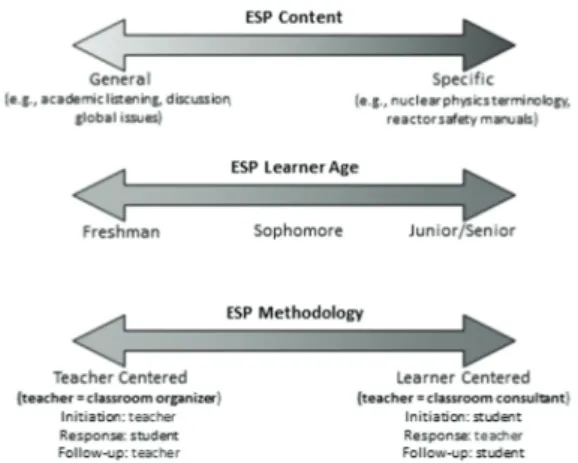
Evaluation of the CELESE Program
Students then complete a series of projects in which these skills are used in a meaningful setting. The first is a group project in which students choose a topic of high interest (and often controversial) and use Internet resources to investigate more about it. The second project is a group project in which students first learn how to design and use questionnaires, and then apply this knowledge to an investigation of their peers.
The third project is an individual project in which students design and carry out a more traditional science or engineering experiment using only household items. For all projects, students must write a formal report and present their findings as an oral presentation. Technical Writing is a two-semester course in which students learn how to write a conference-level research paper using a classroom textbook and corpus-based materials and software.
For example, in technical writing, students are encouraged to build their own corpora of technical papers and then use corpus analysis techniques to analyze these texts for characteristic features. Students are required to take the TOEIC five times; once upon entering the university and then once at the end of each academic year before graduation. First, students are required to complete course survey forms, the results of which are returned directly to the course instructor.
However, it must be said that since the inception of the CELESE program, student and faculty response has been overwhelmingly positive, especially in light of the fact that average CRT and TOEIC scores have shown significant gains in each year of the year. program (see Fig. 3).
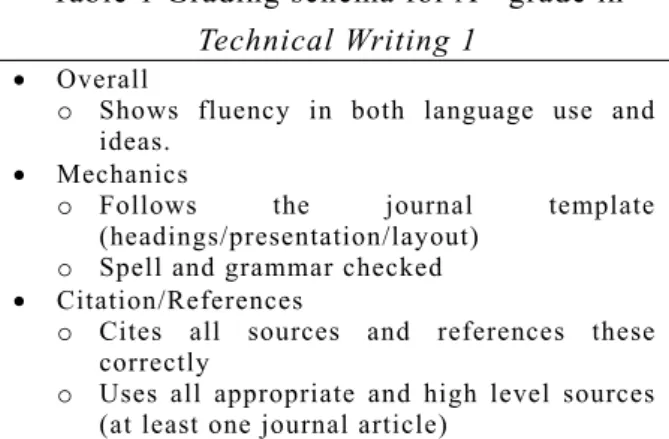
Future Development Plans
Feedback from both students and faculty is carefully considered and often has a direct impact on CELESE's future plans.
Conclusions
- 先 行 研 究
- 授 業 の 構 成
- 学 生 か ら の フ ィ ー ド バ ッ ク
英 語 プレゼンテーション
- プ レ ゼ ン テ ー シ ョ ン の 導 入
- 先 行 研 究
- 授 業 の 構 成
- 学 生 か ら の フ ィ ー ド バ ッ ク
- 発 展 の 可 能 性
12]FAN Lianghuo, YEO Shu Mei, “INCORPORATING ORAL PRESENTATION IN MATHEMATICS TEACHING AND LEARNING: AN EXPLORATORY STUDY WITH SINGAPORE SECONDARY SCHOOL STUDENTS”, Montana Math Lover, Monograph 3, pp.81-98. 13]Ena Bhattacharyya, Rajeswary Appacutty Sargunan, “Technical Oral Presentation Skills and Attributes in Engineering Education: Stakeholder Perceptions and University Preparation in a Malaysian Setting”, AA AE2 009, 2009. 14]Author Leo Yu, “Teaching Oral Presentation Skills by an Online Multi Media Assisted Language Learning Package: A Case Study”, LACCEI Sixth International Latin American and Caribbean Conference on Engineering and Technology, 2008.
Morales, Ferdinand Rosa, "Video Recording Feedback to Improve Oral Presentation Skills of Engineering Students: A Pilot Study". 16]NUR AFIQAH BINTI AB RAHMAN, "A SURVEY OF THE ORAL PRESENTATION SKILLS OF ENGINEERING STUDENTS: A CASE STUDY". Maruchimedia CALL wo riyoushita gaikoku kyouiku no kaizen [Reform in foreign language teaching using multimedia CALL.].

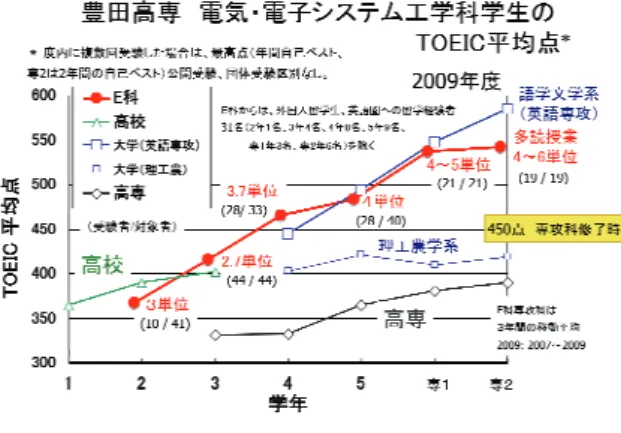
![図 3 多 読 に よ る 情 報 処 理 ル ー ト [2]](https://thumb-ap.123doks.com/thumbv2/123deta/10308721.0/34.892.97.384.822.1039/図3多読による情報処理ルート2.webp)
